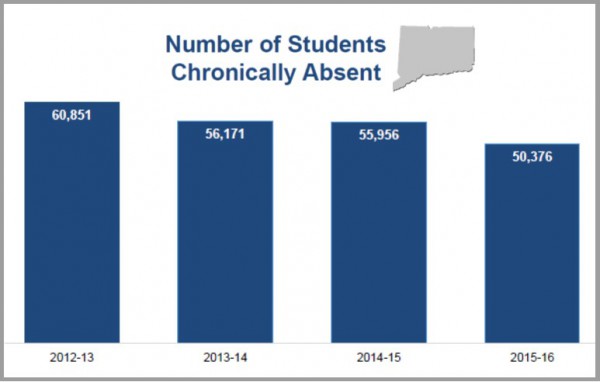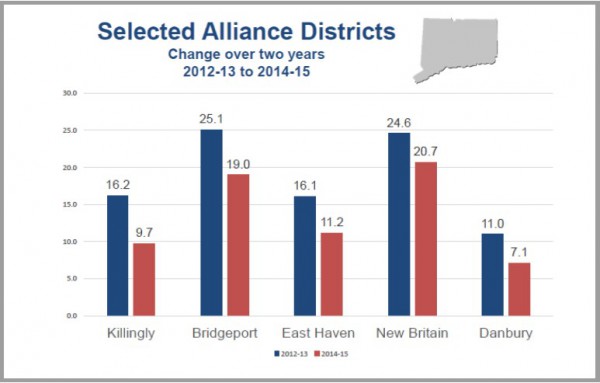America’s Best States to Live In: Connecticut Ranks Second
/The only state that is a better place to live in than Connecticut is Massachusetts, according to a new survey of key data. Connecticut was ranked second when the website 24/7 Wall St. reviewed three statewide social and economic measures — poverty rate, educational attainment, and life expectancy at birth — to rank each state’s living conditions. Based on the data analyzed, the state’s motto could easily be “live long and prosper.” Massachusetts, home to one of the nation’s wealthiest and most highly educated populations, followed by neighboring Connecticut, lead the nation in quality of life. Mississippi, the poorest state in the country, trails the other 49 states.
Among the key stats for Connecticut:
- 10-year population growth: 5.8% (10th lowest)
- Unemployment rate: 5.1% (19th highest)
- Poverty rate: 10.5% (6th lowest)
- Life expectancy at birth: 80.4 years (2nd highest)
 Quality of life in the United States is heavily dependent on financial status, the survey summary points out. As a consequence, the nation’s best states to live in often report very high incomes. With a median household income of $71,346 a year, fifth highest of all states, Connecticut is the second best state to live in and an especially good example of this pattern, the description of Connecticut’s ranking explains.
Quality of life in the United States is heavily dependent on financial status, the survey summary points out. As a consequence, the nation’s best states to live in often report very high incomes. With a median household income of $71,346 a year, fifth highest of all states, Connecticut is the second best state to live in and an especially good example of this pattern, the description of Connecticut’s ranking explains.
The publication notes that “While satisfactory living conditions are possible with low incomes, this is true only to a point. Once incomes fall below the poverty line, for example, financial constraints are far more likely to diminish quality of life.”
Rounding out the top five: New Hampshire, Minnesota, and New Jersey. At the bottom of the list: Alabama, Arkansas, Louisiana, West Virginia and Mississippi.
Education levels are another major contributor to a community’s living conditions — not just as a basis of economic prosperity, but also as a component of an individual’s quality of life. Due in part to the greater access to high paying jobs that often require a college degree, incomes also tend to be higher in these states. In all of the 15 best states in which to live, the typical household earns more than the national median household income of $55,775, 24/7 Wall St. pointed out.
Like the vast majority of states on the higher end of the list, Connecticut is described as relatively safe. There were 219 violent crimes reported for every 100,000 state residents in 2015, among the lowest rates of all states, the survey stated. Housing markets are also indicative of quality of living. A high median home value, for instance, frequently means high demand for housing in the area. Nationwide, the typical home is worth $194,500. In most of the 25 top states, the median home value far exceeds the nationwide median.
The survey did not take into account more subjective conditions such as climate preference, the presence of friends and family, and personal history.
To identify the best and worst states in which to live, 24/7 Wall St. devised an index composed of three socioeconomic measures for each state: poverty rate, the percentage of adults who have at least a bachelor’s degree, and life expectancy at birth. The selection of these three measures was inspired by the United Nations’ Human Development Index. Poverty rates and bachelor attainment rates came from the U.S. Census Bureau’s 2015 American Community Survey. Life expectancies at birth are from the Centers for Disease Control and Prevention and are as of 2012, latest year for which data is available. Unemployment rates are from the Bureau of Labor Statistics, and are for October 2016, the most recent available month of data.


 the right of abused and neglected children and children with disabilities. She was appointed by Governor Dannel Malloy to serve as Connecticut's Child Advocate on August 1, 2013. As Child Advocate, she sets priority reviews for the OCA, manages office operations, and publishes vital information regarding the well-being of children and recommendations for system reform. Prior to this appointment, she served for several years as the Director of the Child Abuse Project at the Center for Children's Advocacy in Hartford.
the right of abused and neglected children and children with disabilities. She was appointed by Governor Dannel Malloy to serve as Connecticut's Child Advocate on August 1, 2013. As Child Advocate, she sets priority reviews for the OCA, manages office operations, and publishes vital information regarding the well-being of children and recommendations for system reform. Prior to this appointment, she served for several years as the Director of the Child Abuse Project at the Center for Children's Advocacy in Hartford.
 his important issue and help animals by organizing fundraisers in Connecticut communities. The announcement of her election, after more than 4,000 ballots were cast earlier this month by 5th graders, was made at her school in Milford. She was one of seven candidates on the ballot; only 5th graders were eligible to vote.
his important issue and help animals by organizing fundraisers in Connecticut communities. The announcement of her election, after more than 4,000 ballots were cast earlier this month by 5th graders, was made at her school in Milford. She was one of seven candidates on the ballot; only 5th graders were eligible to vote. many others,” Stuart added.
many others,” Stuart added.




 ACM comprises one of the largest, most experienced concentrations of world-class aerospace companies, the world's AEROSPACE ALLEY! ® The organization points out that member firms grew up where aerospace was born. Today, precision components manufacturer in the state take to the skies every day, in every corner of the globe, as they have since the inception of powered flight.
ACM comprises one of the largest, most experienced concentrations of world-class aerospace companies, the world's AEROSPACE ALLEY! ® The organization points out that member firms grew up where aerospace was born. Today, precision components manufacturer in the state take to the skies every day, in every corner of the globe, as they have since the inception of powered flight.

 The STSI's 107 individual indicators are sorted into five composites: Research and Development Inputs, Risk Capital and Entrepreneurial Infrastructure, Human Capital Investment, Technology and Science Workforce, and Technology Concentration and Dynamism. The report indicated that "Connecticut showed major improvement in the Technology Concentration and Dynamism index, going from 21st to 10th. This dramatic rise marks one of the larger overall changes on this index. While modest increases were seen in the Research and Development Inputs index and Human Capital Investment index, these two indices have a much heavier focus on stock measures, and Connecticut’s aerospace and defense sectors help anchor the state’s performance in these areas."
The STSI's 107 individual indicators are sorted into five composites: Research and Development Inputs, Risk Capital and Entrepreneurial Infrastructure, Human Capital Investment, Technology and Science Workforce, and Technology Concentration and Dynamism. The report indicated that "Connecticut showed major improvement in the Technology Concentration and Dynamism index, going from 21st to 10th. This dramatic rise marks one of the larger overall changes on this index. While modest increases were seen in the Research and Development Inputs index and Human Capital Investment index, these two indices have a much heavier focus on stock measures, and Connecticut’s aerospace and defense sectors help anchor the state’s performance in these areas." In the Human Capital Investment composite index, Connecticut ranked third, as it did in 2014 and 2012, after ranking fifth in 2010. In Research & Development, Connecticut placed eighth, its second highest finish, after ranking tenth, seventh and seventh in previous indexes. Connecticut ranked 11th in Risk Capital and Entrepreneurial Infrastructure, up from 14th two years ago, but not as high as sixth place in 2012 and third in 2010.
In the Human Capital Investment composite index, Connecticut ranked third, as it did in 2014 and 2012, after ranking fifth in 2010. In Research & Development, Connecticut placed eighth, its second highest finish, after ranking tenth, seventh and seventh in previous indexes. Connecticut ranked 11th in Risk Capital and Entrepreneurial Infrastructure, up from 14th two years ago, but not as high as sixth place in 2012 and third in 2010.



 Reading: children who had no regular early care and education arrangements the year before kindergarten and those whose primary arrangements were home-based relative care or non-relative care tended to score lower than children who were primarily in center-based care or who spent the same amount of time in multiple care arrangements.
Reading: children who had no regular early care and education arrangements the year before kindergarten and those whose primary arrangements were home-based relative care or non-relative care tended to score lower than children who were primarily in center-based care or who spent the same amount of time in multiple care arrangements.
 nship bloggers to follow in 2014 by Common Sense Media. Polgar, an attorney and college professor, is a frequent speaker (three-time TEDx) and tech commentator on television and in print, focusing on digital citizenship, creativity, cyber ethics, tech balance and humanizing the online experience.
nship bloggers to follow in 2014 by Common Sense Media. Polgar, an attorney and college professor, is a frequent speaker (three-time TEDx) and tech commentator on television and in print, focusing on digital citizenship, creativity, cyber ethics, tech balance and humanizing the online experience. Joining internationally renowned
Joining internationally renowned 


























